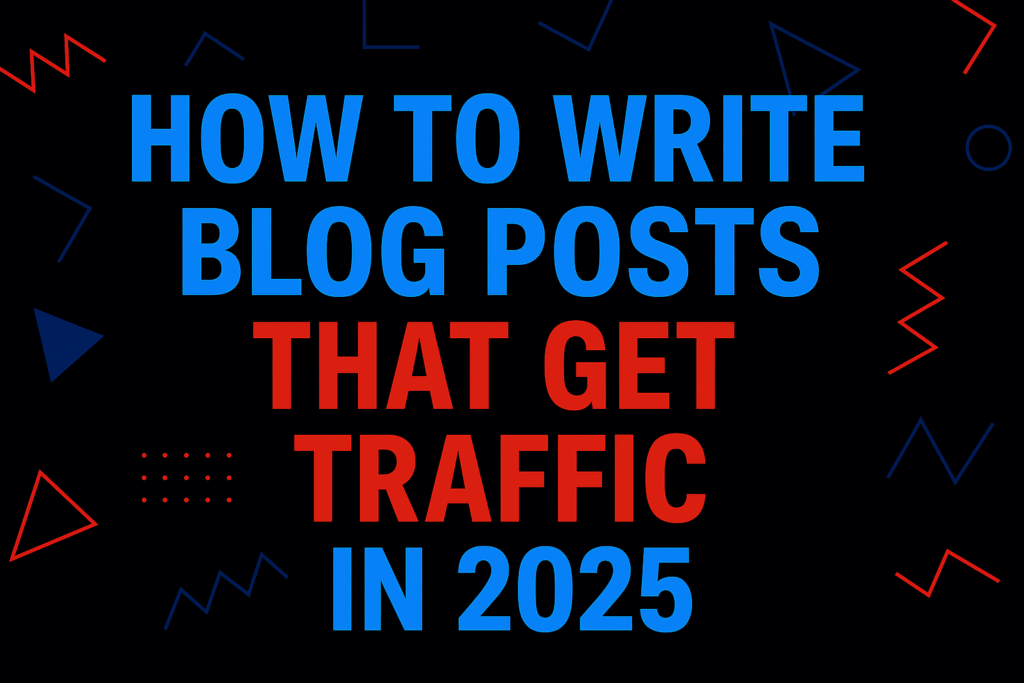How to Write Blog Posts That Get Traffic in 2025
Prefer watching over reading? You can check out the full tutorial on YouTube in the player below.
Or if you’re more of an old-school type who likes a proper walkthrough in text – just scroll down.
Table of Contents
- Why Writing for Search Still Matters in 2025
- Step 1: Start with Search – Using Ahrefs to Find Real Demand
- Step 2: Turn Keywords into Structure with AI
- Step 3: Edit Like a Human – The Final Polish
- Step 4: Publish and Interlink Smartly
- Step 5: Don’t Stop There – Boost with External Links and Social Signals
- Final Thoughts
Why Writing for Search Still Matters in 2025
Despite predictions that search would die or transform beyond recognition, Google continues to be the starting point for most online journeys. This is especially true in B2B, where decision-makers research solutions long before they’re ready to buy.
- Evergreen content outlasts social media posts by years.
- Long-tail keywords make up over 70% of all search traffic.
- Search intent signals readiness to act – something social media rarely delivers.
Someone browsing TikTok is usually in discovery mode. But someone searching “how to reduce customer churn” is ready to learn, compare, and maybe buy. That’s the power of intent-driven content in blog format.
Step 1: Start with Search – Using Ahrefs to Find Real Demand
Start with real data. Tools like Ahrefs Keywords Explorer help uncover:
| Metric | Ideal Value | Why it Matters |
|---|---|---|
| Search Volume | 1 000+ monthly | Shows demand |
| Keyword Difficulty (KD) | Below 30 | Low competition |
Match each keyword to one of the four types of intent:
- Informational: how-to, tutorials
- Commercial: comparisons, templates
- Transactional: buy, sign up now
- Navigational: brand or product names
Stick with informational and commercial for blog content. For example, instead of aiming for “content marketing” (KD 85), target “content marketing for SaaS startups” (KD 15, 300 searches/month).
Step 2: Turn Keywords into Structure with AI
AI is great for building outlines. Use tools like ChatGPT, Claude, or Notion AI to:
- Turn your keyword into a blog outline
- Specify the reader’s context and goals
- Request H2/H3 structure with lists and tables
Prompt example:
“Create an outline for a post targeting ‘content marketing for B2B SaaS’. Assume the reader is a marketing manager looking for actionable steps.”
This gives you structure aligned with search intent, not fluff. Don’t let AI write the whole thing – use it to accelerate, not replace.
Step 3: Edit Like a Human – The Final Polish
Now, grab your coffee and read through the AI draft with human eyes.
- Cut generic phrases and add specifics from your experience.
- Link ideas logically between sections – no robotic flow.
- Insert real stats and examples (e.g. “open rates improved by 14.7%”).
Use Google’s featured snippets to your advantage by answering common questions directly:
Q: How long should email subject lines be?
A: 30–50 characters to avoid truncation on mobile devices.
Step 4: Publish and Interlink Smartly
Before hitting publish:
- Place the post in the correct category (e.g. “Marketing Automation”).
- Add 2–3 internal links to related pages.
- Use clean, descriptive URLs (e.g.
/email-marketing-guide).
Tools like RankMath or Yoast help fine-tune your meta descriptions and title tags – but always write for humans first.
Step 5: Don’t Stop There – Boost with External Links and Social Signals
The first 72 hours after publishing are crucial:
- Share on LinkedIn with a comment on why the post matters
- Engage in Slack, Reddit, and Discord – don’t just drop links, be helpful
- Reach out to blogs and newsletters for backlink opportunities
Track performance with Google Search Console. Look at rising queries, click-through rates, and impressions – then adjust or expand the post as needed.
Final Thoughts
Writing blog posts that generate traffic isn’t about writing more – it’s about writing with intent. Use tools like Ahrefs and AI to build smart foundations, then apply your unique insight to polish and promote.
Repeat this system and your blog becomes more than content – it becomes a compound asset working for your business 24/7.
